What’s your water like?
Water quality can no longer be taken for granted. Here in Central Minnesota, a variety of factors can affect how your water tastes, smells, feels and works in and around your home. Well water quality, possible contamination, an aging water distribution system, violations of federal drinking water standards and a home’s plumbing are examples of things that can affect a home’s water supply. Some water problems may not be as obvious as others. That’s why we need to test your water to determine if water treatment is necessary and which option is right for you.
HARD WATER
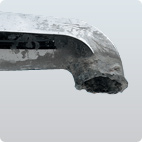
Hard water contains dissolved calcium, magnesium and in many cases, iron. Most homes have hard water, whether it is supplied by a private well or a municipality. In many cases, homeowners don’t realize they have hard water or the constant and expensive harm it causes.
Dry skin and hair, bathtub ring, spots on glass, silverware and fixtures, dull, dingy clothing, disappointing performance and a shortened life expectancy of water-using appliances are all problems frequently caused by hard water.
Free Water Analysis for Hard Water
CLOUDY WATER
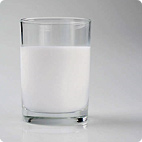
Cloudy, murky or grayish water is usually caused by dissolved or suspended solids. This is also known as “turbidity.” Water can become turbid naturally or from land disturbances such as construction, storms and urban runoff.
The turbidity of your water can range from low to high. But even if your water looks clear, it could still contain a high level of dissolved solids. That’s why, whether your water is turbid or not, we recommend you have it tested.
CHLORINE TASTE AND SMELL

Since the 1850s, chlorine has been used as a disinfectant to kill harmful bacteria in water itself or the pipes that transport it. Although it has helped end a number of major threats to public health and is essential at the treatment plant and in the water distribution system, it is no longer necessary once the water reaches your home.
Though chlorine is vital for stopping the spread of disease, its benefits come at a price. Chlorine tastes and smells bad. It dries skin and hair, fades clothes (bleach is made of chlorine), and can dry out the rubber seals in appliances, shortening their lives.
TASTES AND ODORS

In its pristine state, water is colorless, tasteless and odorless. So, if your water tastes or smells funny, you owe it to yourself to find out why.
Free Water Analysis for tastes and odors.
- Earthy or musty taste and odor: These types of complaints are generally the result of compounds released due to decayed vegetation and are typically associated with different forms of algae. While not toxic, they are nonetheless unpleasant and can be offensive at very low concentrations.
- “Rotten egg” smell: Another common source of smelly water is hydrogen sulfide. Hydrogen sulfide is a colorless corrosive gas which has the characteristic odor of rotten eggs. If present in high enough concentrations, it can leave an unpleasant odor on hair and clothing. It can also accelerate corrosion of metal parts in appliances.
- Metallic taste: As the name implies, a metallic taste to your water indicates the presence of metals such as iron, copper, manganese or zinc. Iron and manganese are often naturally occurring and are predominately found in groundwater. Copper and zinc can come from an aging water distribution system or the corrosion of copper plumbing and brass fittings.
IRON AND MANGANESE STAINING
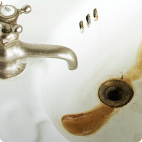
Water is a natural solvent and given the needed time and conditions, it will dissolve anything it comes in contact with. That’s why, depending on where you live, your water can contain iron or manganese which can cause rusty-orange or black staining. You’ll see the stains on clothes, fixtures, sinks, tubs, water-using appliances and toilets.
A free water analysis is a great way to get started.
BLUE-GREEN STAINING
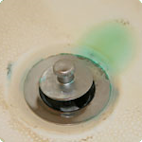
If water has a low pH, you can see the tell-tale, blue-green stains. These stains are most noticeable on white surfaces that your water comes in contact with such as sinks, tubs and showers, toilets and even white clothing.
BACTERIA AND VIRUSES
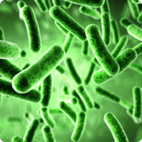
According to the Centers for Disease Control and Prevention, there could be as many as 12 million cases of waterborne acute gastrointestinal illness annually in the United States alone. These illnesses are frequently caused by bacteria, viruses and protozoa that make their way into the water supply. Even well operated, state-of-the-art treatment plants cannot ensure that drinking water is entirely free of microbial pathogens.
Request a Free Water Analysis to get started today.
